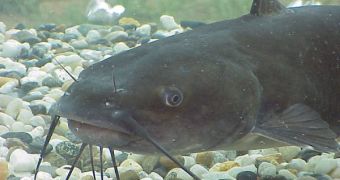Until now, researchers have known only about three types of cells that animals in general use for vision. These three were considered to provide fish, mammals and birds with all the capabilities they needed for distinguishing color, depth and the difference between night and day. A new study has recently revealed that fish sport another type of light sensor, which is found in cells that were previously thought to only play a role in facilitating communication between specialized vision cells in the retina.
“This is mind-boggling. For more than 100 years, it's been known that rod cells and cone cells are responsible for sensing light, and therefore, vision. Then, about seven years ago, another light sensor was discovered in the retina, revealing a third type of light-sensitive cells in mammals, so we set out to look at whether this was true in other vertebrates as well,” Johns Hopkins University School of Medicine Solomon H. Snyder Department of Neuroscience Professor of Neurscience King-Wai Yau, PhD, explains.
The newly identified retinal horizontal cells, which are in essence nerve cells that do not even communicate with the brain, were found when experts took a closer look at melanopsin light sensors, which are formations involved in vision that are not very active in mammals. In other types of animals, they play a role in distinguishing the differences between night and day. The study revealed the presence of melanopsin in the retinal horizontal cells of certain species of goldfish and catfish, ScienceDaily informs. According to Yau, these cells play an important role in light detection.
They allow neighboring photoreceptor cells to exchange information comparing features of the image they sense, a process that the researcher says is paramount for recreating an accurate visual sensation in the brain. “The brain processes what it sees in context to the surroundings. This allows our brain to see borders and contours – horizontal cells are the reason why we can recognize and see a face, for example,” the researcher adds.
“The bottom line is that the light effect on the horizontal cells is subtle, perhaps to allow the eyes of these animals to fine-tune their functions to different ambient light conditions. But that these horizontal cells are light sensitive at all is a very surprising finding and changes how we think about retinas as a whole,” Yau concludes.

 14 DAY TRIAL //
14 DAY TRIAL //